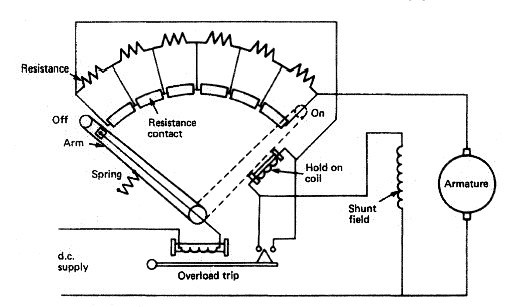
Shunt Wound d.c. Motor, Series Wound d.c. Motor & d.c. Motor Starter
When a current is supplied to a single coil of wire in a magnetic field a
force is created which rotates the coil. This is a similar situation to the
generation of current by a coil moving in a magnetic field. In fact
generators and motors are almost interchangeable, depending upon
which two of magnetic field, current and motion are provided.



